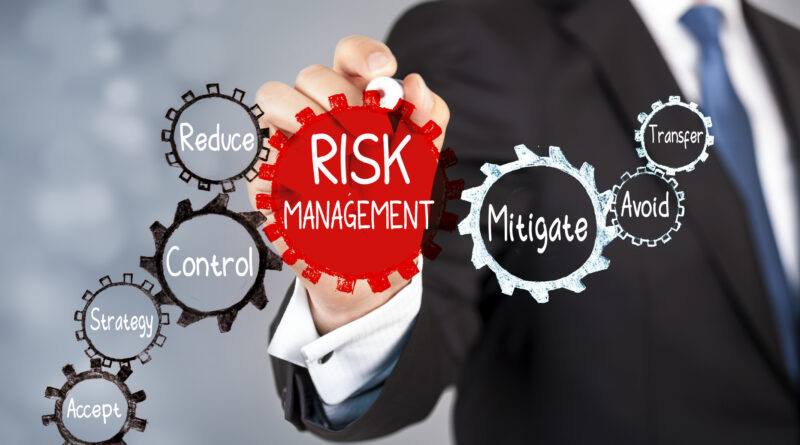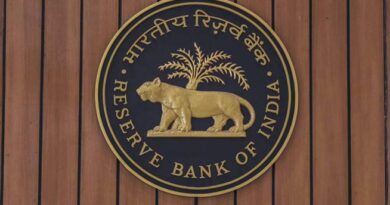Fraud Risk Management in Banking
Fraud risk management is a fundamental aspect of overall Risk Management within the banking sector. In India, banks adhere strictly to guidelines set forth by the Reserve Bank of India (RBI) to prevent, detect, and promptly report fraudulent activities. Emphasizing prevention, early detection, and swift reporting, these guidelines aim to safeguard the integrity of financial institutions and protect stakeholders’ interests.
The policy framework established by the RBI focuses on several key principles. Firstly, it underscores the importance of identifying early warning signs of potential fraud. This proactive approach allows banks to implement corrective measures swiftly, thus mitigating the risk of fraudulent breaches. Moreover, maintaining a robust review mechanism is essential to preempting fraudulent activities and ensuring compliance with regulatory standards.
Fraud Risk Management- Defined
Fraud risk management in banking refers to the systematic approach employed by financial institutions to identify, assess, mitigate, and monitor the risks associated with fraudulent activities. It encompasses a range of strategies, policies, procedures, and technologies aimed at preventing, detecting, and responding to fraudulent schemes that could result in financial losses, reputational damage, or legal liabilities. The goal of fraud risk management is to safeguard the institution’s assets, protect customers’ interests, maintain regulatory compliance, and uphold the integrity of the financial system.
Classification of Frauds
Any fraud can be broadly classified as
- Internal frauds – involvement of employees
- External frauds – by customers or third party
Furthermore as per Indian Penal Code provisions – Frauds can be classified as under
- Misappropriation and criminal breach of trust.
- Fraudulent encashment through forged instruments, manipulation of books of account or through fictitious accounts and conversion of property.
- Unauthorized credit facilities extended for reward or for illegal gratification.
- Negligence and cash shortages.
- Cheating and forgery.
- Irregularities in foreign exchange transactions.
- Any other type of fraud not coming under the specific heads as above
Detecting Frauds sources
Fraudulent activities can be detected through various triggers, including:
- Customer complaints
- Alerts from investigating agencies
- Media reports
- Whistleblower complaints
- Anonymous/pseudonymous complaints with verifiable facts
- Audits and inspections (internal and external)
- Periodical verification of customer information
- Reconciliation of office accounts
- Observations during controllers’ visits
- Periodical changes in incumbencies
- Red-flagged accounts
Identifying & Declaring Fraud
- All cases, regardless of the amount involved, must be presented to the Competent Authority for thorough examination to determine whether they constitute fraud. This includes cases where a fraudulent angle is suspected or established, investigations are initiated by central/state agencies, complaints are lodged by other banks/consortium/customers, or when directed by the Reserve Bank of India. Suspected instances noted during audits are documented in the Audit Report as Suspected Frauds.
Reporting of Frauds
- Banks must promptly report all frauds amounting to ₹1.00 lakh and above to their Boards upon detection.
- Information regarding frauds is typically presented quarterly to the Audit Committee of the Board of Directors.
- Banks should conduct an annual review of fraud cases and provide a summary to the Board of Directors for informational purposes
Pillars of Fraud Risk Management:
Banks employ a multi-layered approach to fraud risk management, with each pillar playing a critical role in safeguarding customer finances. Here’s a deeper dive into these essential components:
Risk Assessment and Profiling
- Conducting comprehensive risk assessments is fundamental to identifying and understanding potential vulnerabilities within a bank’s operations. By analyzing historical data, emerging trends, and regulatory requirements, banks can develop risk profiles that prioritize areas susceptible to fraudulent activities. This enables proactive measures to be implemented to mitigate identified risks effectively.
People and Culture
- Employee Training: Regular training programs equip employees with the knowledge and skills to identify red flags and suspicious activity. This includes recognizing common fraud tactics, understanding reporting procedures, and maintaining data security best practices. Training should be tailored to different roles within the bank, ensuring all staff members are prepared to contribute to a robust fraud defense system.
- Awareness Programs: Fostering a culture of fraud awareness goes beyond training employees. Banks can implement awareness programs to educate customers about prevalent fraud schemes. This can include informative brochures, online resources, and social media campaigns. By empowering customers to be vigilant, banks create a stronger line of defense against fraud attempts.
- Incentivizing Reporting: Encouraging employees to report suspicious activity, even if unconfirmed, is crucial. This can be achieved by establishing clear reporting procedures, maintaining open communication channels, and potentially offering incentives for timely and accurate reporting.
Policies and Procedures
- Account Opening: Stringent account opening procedures are the first line of defense against fraud. This includes verifying customer identity through proper documentation, implementing Know Your Customer (KYC) guidelines, CDD, CIP measures and conducting background checks when necessary.
- Transaction Monitoring: Banks establish clear rules and thresholds for transaction monitoring. These rules may trigger alerts for transactions exceeding spending limits, originating from unusual locations, or involving high-risk merchants. A well-defined escalation process ensures that alerts are reviewed promptly and appropriate action is taken.
- Fraud Investigation: When a suspected fraud case arises, a clear investigation process is essential. This involves gathering evidence, analyzing transaction data, and collaborating with law enforcement if necessary. Banks should have established procedures for resolving fraudulent transactions and compensating victims promptly.
Regulatory Compliance
- Compliance with regulatory requirements is non-negotiable in the realm of fraud risk management. Regulatory bodies impose stringent guidelines and mandates to ensure banks adhere to prescribed standards for data protection, customer authentication, and fraud detection. Banks must stay abreast of evolving regulatory frameworks and proactively adapt their fraud risk management strategies to remain compliant and avoid potential legal and reputational repercussions.
Technology and Analytics
- Data Security: Implementing robust data security measures like encryption and access controls safeguards sensitive customer information. Regular security audits and vulnerability assessments help identify and address potential weaknesses in the bank’s technological infrastructure.
- Fraud Detection Systems: Advanced fraud detection systems leverage machine learning and artificial intelligence (AI) to analyze vast amounts of transaction data in real-time. These systems identify patterns and anomalies that may be indicative of fraudulent activity. The ability to learn and adapt to evolving fraud tactics is crucial for the effectiveness of these systems.
By effectively integrating these pillars, banks can create a comprehensive and dynamic fraud risk management framework that protects customers and the institution itself.
Proactive Fraud Prevention Strategies
Effective fraud risk management goes beyond reactive measures. Here are some key strategies for proactive prevention:
- Customer Authentication: Implementing strong authentication methods like multi-factor authentication (MFA) significantly reduces the risk of unauthorized access.
- Transaction Monitoring: Banks continuously monitor account activity for deviations from established spending patterns. Transactions exceeding spending limits, unusual locations, or sudden changes in transaction frequency can trigger alerts.
- Data Security: Robust data encryption practices safeguard customer information from unauthorized access or breaches.
- Customer Education: Educating customers about common fraud tactics empowers them to identify and report suspicious activity promptly.
Banks implement measures such as preventive vigilance committees, whistleblower hotlines, annual training programs, and ethics policies to foster a culture of compliance among their workforce.
The Operational Risk Management (ORM) department collaborates with other departments to establish a framework for training, monitoring, and reporting frauds, promoting transparency and nurturing a culture that deters fraudulent behavior both internally and externally.
Future of Fraud Risk Management
The future of fraud risk management in banks will be shaped by advancements in technology, regulatory reforms, and evolving fraud tactics. Key trends and innovations include:
- AI and Machine Learning: The integration of AI and machine learning algorithms enables banks to enhance fraud detection capabilities by analyzing vast amounts of data in real-time and identifying complex patterns indicative of fraudulent activities.
- Blockchain Technology: The adoption of blockchain technology holds promise in mitigating fraud risks by providing immutable and transparent transaction records, thereby reducing the likelihood of fraudulent tampering or manipulation.
- Biometric Authentication: Biometric authentication methods such as fingerprint scanning, facial recognition, and voice recognition offer enhanced security measures by providing unique identifiers for user verification, reducing the risk of identity theft and account takeovers.
- Regulatory Compliance Automation: Automation of regulatory compliance processes through the use of regulatory tech solutions streamlines compliance efforts, reduces operational costs, and ensures adherence to evolving regulatory requirements.
Conclusion
In a nutshell, fraud risk management remains vital for banks to counter the rising threat of fraudulent activities. Through proactive measures in prevention, detection, and response, banks can mitigate risks, safeguard stakeholders, and uphold financial integrity. Embracing technology, fostering collaboration, and ensuring regulatory compliance are crucial for fortifying resilience against evolving fraud threats.
Fraud risk management is an ongoing process requiring constant vigilance and adaptation. With a comprehensive framework and customer vigilance, banks and customers can effectively combat fraud, protecting assets and fostering a secure financial environment.




